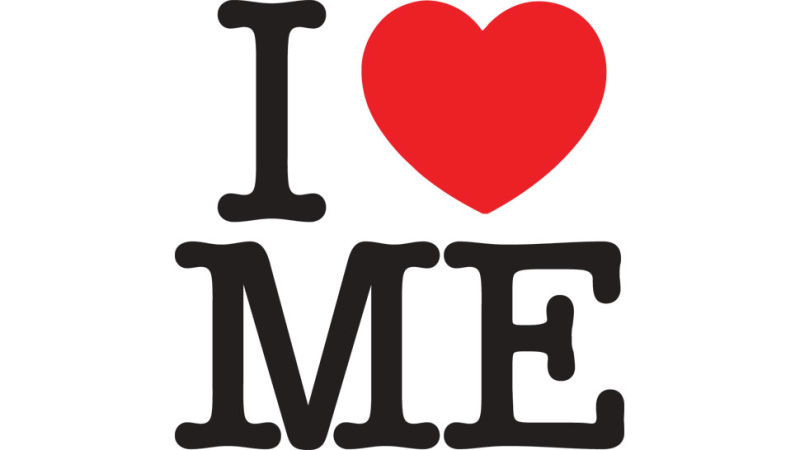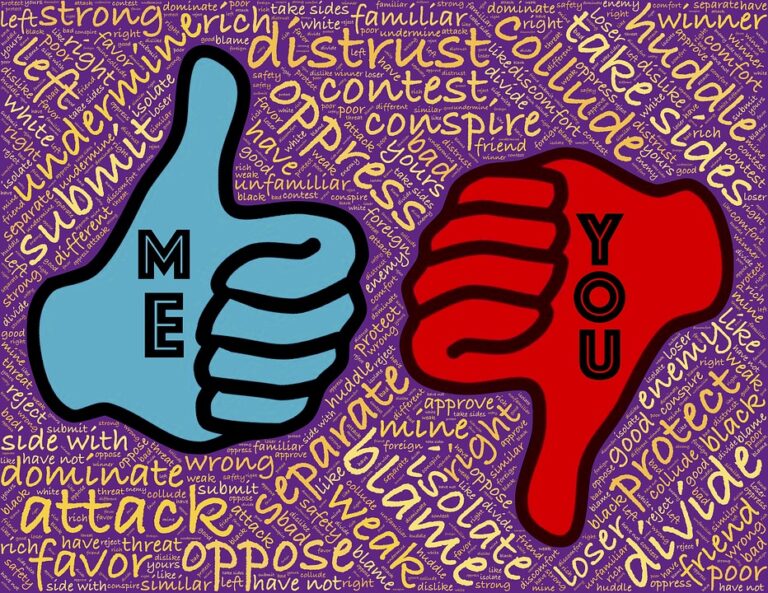Great movies generally are known to have great plots, special effects, direction, production, etc. However, some the greatest movies ever made stand apart not because of the above but rather because of extraordinary villains. Such villains are deep and complex in their psychology and in how they see the world. My personal favorite is the Joker from Christopher Nolan’s The Dark Knight.
In this thrilling crime saga, the child grows up in a broken home, abused and neglected. He ends up in foster care, lonely and unloved. Eventually, as he grows this child finds some semblance of self-esteem and control over his destiny, but through a life of crime. He rises through the ranks and becomes the stuff villain movies are made of – a Bad Guy.

Pick any of the last 100 hero-villain Hollywood or Bollywood features and you will typically come across an antagonist that exemplifies narcissism, violence and fear. And the aforementioned profile is their typical backstory give or take a few details.
‘I, me and mine.’
These traits are found in the lowest grade of consciousness in the pancha kosha system – anna-maya. While such a state is considered quite normal, adorable and expected for an infant, it becomes a recipe for chaos and suffering if we are not dislodged from it as we grow into adulthood. Since anna-maya is the type of consciousness that evokes self-centeredness and a yearning to satisfy carnal, material needs, the subtleties of life are elusive here. It’s only the voice of ‘I, me, and mine’ that filters every decision and behavior.
Going back to the theme of hero-villain movies, most of the time we enjoy witnessing the downfall of the villain not realizing that we ourselves may embody many of those very same villainous qualities which we naturally despise. This perception can mask the realities of our inner lives.
Not me
The pancha kosha (Five Types of Consciousness) are all embedded within each of us. Each living being has the potential to evoke the lowest to the highest state of consciousness to varying degrees AND varying mixtures. This means that we also may very well embody the lowest state of villainous consciousness although we may not always exhibit it. We usually think this villain is “not me”.
Contrary to the notion that consciousness is passive and indirect, it is actually a form of energy that takes an active part in our lives. It directly influences our inclinations, desires, thoughts, feelings, decisions and behaviors. Moreover, the multiple types of consciousness can be active simultaneously.

Sometimes me
While most of our days might be consumed in doing hard work, taking care of the family and supporting society, it is entirely possible to become a “mini-villain” given the right amount of provocation. Rash driving, unwelcomed behavior, or an intentional slight are just a small fraction of emotional, verbal and physical aggressions towards others or oneself. When we are caught up in such a moment, it’s not until the aftermath that we may feel a sense of shock and concern at what just happened. “I had no idea I could be so angry or this could be me,” we may ponder.
Such reactions feed the anna-maya within us and the more we feed this kosha, the hungrier it gets. The nature of each type of consciousness is to dominate our entire being. That means it needs to suppress the other states of consciousness in order to do so.
Eventually the shock wears off. The more you feed this tendency, the more used to it you get. Once it becomes an acceptable behavior, it becomes a part of your personality despite its self-destructive power. Even while the guilt builds internally, the mind grows habituated to this new pattern. This further has a cascading effect on our relationships to family, friends, society and so on.
Trouble ahead
The mere build-up of stress or guilt can lead to depression and psychological disorders. It could increase one’s proclivity to immoral and unethical behavior like lying and cheating. For some it may lead to criminal activities. A quick escape from this wild and treacherous path can easily turn into a life addicted to drugs, alcohol, food, TV, etc. The key to remember is that anna-maya is a state where emotions overrun the intelligence and common sense like an unleashed pack of wild dogs.
Therefore, what we do with our minds, bodies and speech has a direct and proportionate impact on our internal conditions. A vicious cycle of self-defeating desires and behaviors must not be allowed to take hold. But how can we control anger when we have been so seemingly wronged in life? How do we curb the lust for the things that have captured our minds? How do we starve the anna-maya in our lives?
When you go to a reputed doctor, they will give you two approaches to handling a disease or ailment. First will be prescriptive medicine – what you should do right now to stop the symptoms. Then, they will discuss preventative measures to minimize or eradicate the chances of the problems recurring.
The Prescription

Dealing with the ravages of the anna-maya mindset in our lives requires the same two approaches. When you are in the heat of the moment and about to succumb to anger, depression or addiction, there are innumerable techniques from many experts you can leverage to draw yourself out of that zone.
- The Price Tag – Try and force yourself to remember the price you will have to pay for the behavior. With emotions colliding at the speed of light within our minds, it can be extremely difficult to think ahead but if you can manage to, you are already a step closer to a better situation.
- Empathy Blitzkrieg – Force yourself to care in the moment even if initially it doesn’t feel genuine. Put yourself then in the shoes of the other party or your future self. Try hard to see things from their eyes. It may take only a split second of empathy to snap yourself out of the negative consciousness.
- The Best You – Quickly remember the person you want to be and aspire for. If you never thought of it, think of it right there and then. Imagine a ‘better you’ that is urging the ‘current you’ to take a breathe.
- Breathe – Then take a breathe. Follow the breadth. This is a powerful tool in any meditative practice and a quick way to curb your ego for a moment. In that moment, you will be able to acknowledge that there is more to your existence than this problem.
If you do the above long enough and often enough, you will likely be able to get rid of a great deal of trouble. However, sometimes the problems are too deep and a psychological pill is just not enough.
Power of Prevention
The prescriptive approach is there to keep the anna-maya at bay. But the real art is in preventing that low energy from drawing us in. This is where a deeper understanding of our existence and purpose in this world become key to unlocking our true potential. To overcome the self-indulgent forces within us, we need to accept several critical axioms:
- Our identity is not of this material realm. We are above the temporary upadhis (identities) such as mother, father, friend, enemy, employee, boss, etc. The ultimate identity is the eternal one – I am atman. Accepting this simple premise has massive implications that will be discussed in future writings.
- Love of the body and all the material pleasures is actually a perverted reflection of our true nature – to be a full embodiment of love for all existence.
- Karma confines us to delusions of material hankerings and sufferings.
- Our dominant consciousness carries us to our next material destiny through reincarnation.
Armed with this foundation, we can develop a strategy to pull away from our conditioning. The key word being strategy. The game plan is to build a foundation that will outlast the effects of time. It means we need to overlook initial defeats as we continue to fortify our futures with deeper realizations. These all-important realizations come through committing oneself to a spiritual practice based on a Dharmic system. However, whichever system or path one may take shelter of, there are two non-negotiable steps a sincere reformer must partake.
#1 Good Advice
Firstly, anyone seeking to elevate their consciousness to a new stratum must seek and accept feedback from a trusted source. This could be a difficult thing to do especially if you are an adult. Adults tend to be set in their own ways having constructed defensive walls to prevent others from damaging their status quo. This has a major downside in that even trustworthy experts who can provide transformational advice would be locked out.
Therefore, we must search for a bond with someone who:
- Has our best in mind
- Knows more than we do about self-development
- Has overcome anna-maya on many occasions themselves
#2 Introspect
No matter how much advice we take, we ultimately must walk the journey ourselves. As the master Morpheus famously tells the hero Neo in the movie The Matrix, “I’m trying to free your mind, Neo. But I can only show you the door. You’re the one that has to walk through it.” It’s our journey and ours alone. Hence, we must develop the faculty to question ourselves; almost like the Socratic method of persistent question and answer until real truths are unearthed. Here our buddhi (higher intelligence) is both asking and answering the questions.
This introspective practice can take some time to get used to. It is not easy to dig up answers we may have tried hard to bury. “Why did I yell so much at my son? It’s only dirt he was playing with. This is the second time today and fourth time this week I almost went out of my way to chastise him. Where did this anger come from? Is it really about him?”
Without serious introspection, good advice will roll off like a water drop from a balloon. We need to soften our inner selves that has been very much hardened by anna-maya. No one has more power to do this than our very selves.
Conclusion
Just as the idea of darkness exists because of the presence of light, the worst part of who we are can show the way to the best of what we can be.


